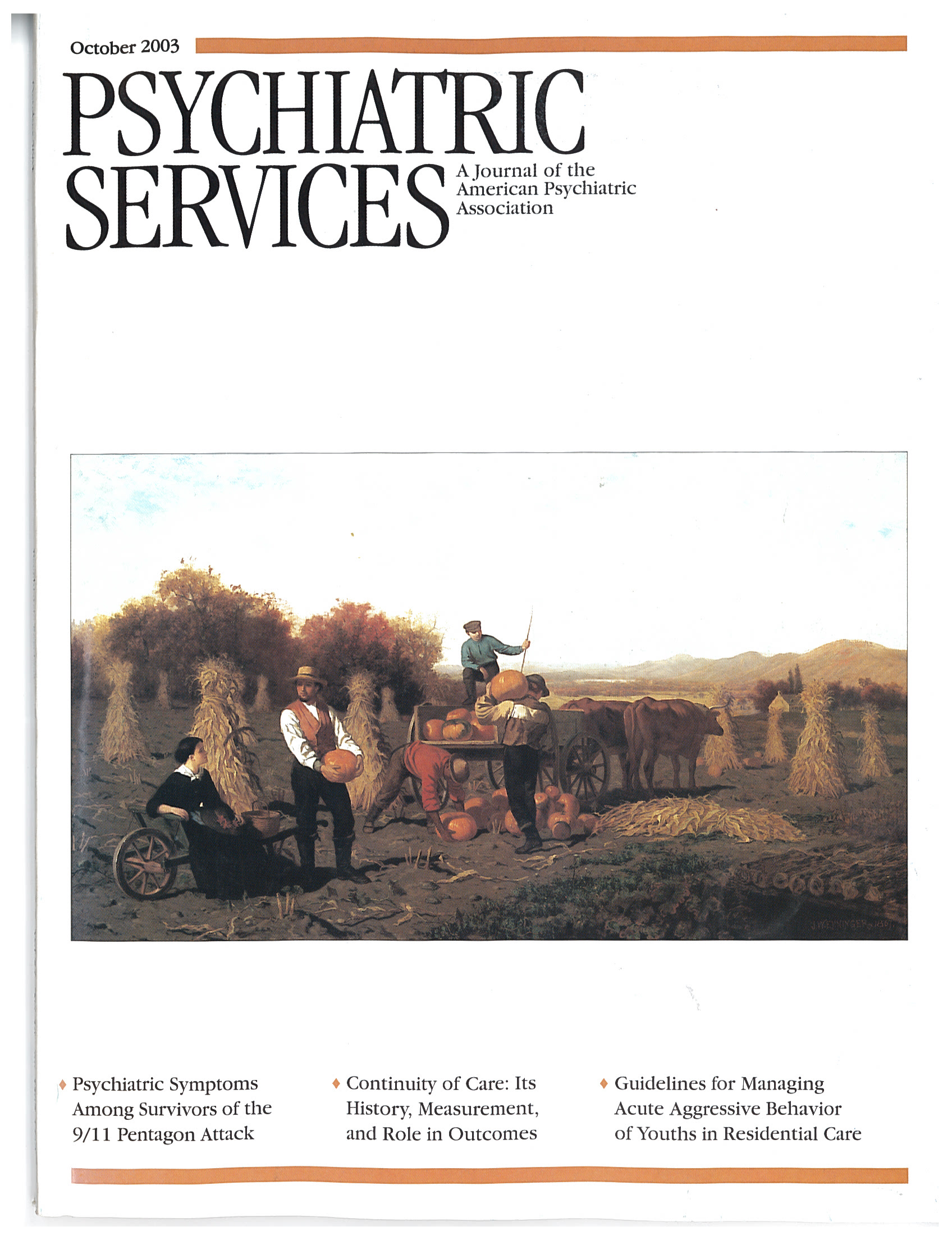Axis V Revisited
To the Editor: The Global Assessment of Functioning (GAF) represents the launch, but not the landing, of the assessment of psychiatric functioning. It debuted in 1980 as axis V in DSM-III (1) to measure an individual's functional capacity. In a brief report in the July issue of Psychiatric Services, Hay and colleagues (2) noted that "concern has been raised about the fact that [the GAF] combines psychological and social functioning measures on a single axis. In contrast, the SOFAS [Social and Occupational Functioning Assessment Scale] focuses on the individual's level of social and occupational functioning while excluding severity of symptoms."
The GAF does indeed collapse two major factors—symptoms and functioning—into a single axis. However, the SOFAS also merges two major areas of functioning—social functioning and occupational functioning—into a single axis. Like axis V, the single-score SOFAS does not allow the rater to specify which factor is being measured. Because the GAF and the SOFAS are either too global (GAF) or too narrow (SOFAS), they are limited in research and clinical settings.
In contrast, the Kennedy Axis V (K Axis) (3,4) breaks symptoms and functioning into their major clinical categories: psychological impairment, social skills, violence, and activities of daily living or occupational skills. It also features three subscales: substance abuse, medical impairment, and ancillary impairment. Because it captures the universe of symptoms and functioning in its seven categories, one can measure each category, rather than losing the information to a single global score. The K Axis can also generate a total score, roughly equivalent to the GAF.
Because the K Axis allows for the measurement of symptoms and functioning in each of the major clinical areas, inefficient and expensive alternatives, such as using a number of different instruments to measure these areas separately, are not necessary. The K Axis also categorizes clinical information in such a way that it can flow directly into the treatment plan (5). Follow-up ratings of the K Axis are easily used to measure progress in specific areas of functioning and symptoms.
More studies are needed to address the assessment of functioning and its relationship to symptoms, treatment decisions, disease management guidelines, and outcome measurement. The GAF represents an important maiden voyage for axis V. However, it may now be time to embrace other deliberative approaches, such as the Kennedy Axis V.
The authors are associate professors of psychiatry at the University of Massachusetts Medical Center in Westborough.
1. Diagnostic and Statistical Manual of Mental Disorders, 3rd ed. Washington, DC, American Psychiatric Association, 1980Google Scholar
2. Hay P, Katsikitis M, Begg J, et al: A two-year follow-up study and prospective evaluation of the DSM-IV axis V. Psychiatric Services 54:1028–01030, 2003Link, Google Scholar
3. Higgins J, Purvis, K: A comparison of the Kennedy Axis V and the Global Assessment of Functioning Scale. Journal of Psychiatric Practice 6:84–090, 2000Crossref, Medline, Google Scholar
4. Kennedy JA: Mastering the Kennedy Axis V: A New Psychiatric Assessment of Patient Functioning. Washington, DC, American Psychiatric Publishing, Inc, 2003Google Scholar
5. Kennedy JA: Fundamentals of Psychiatric Treatment Planning, 2nd ed. Washington, DC, American Psychiatric Publishing, Inc, 2003Google Scholar



